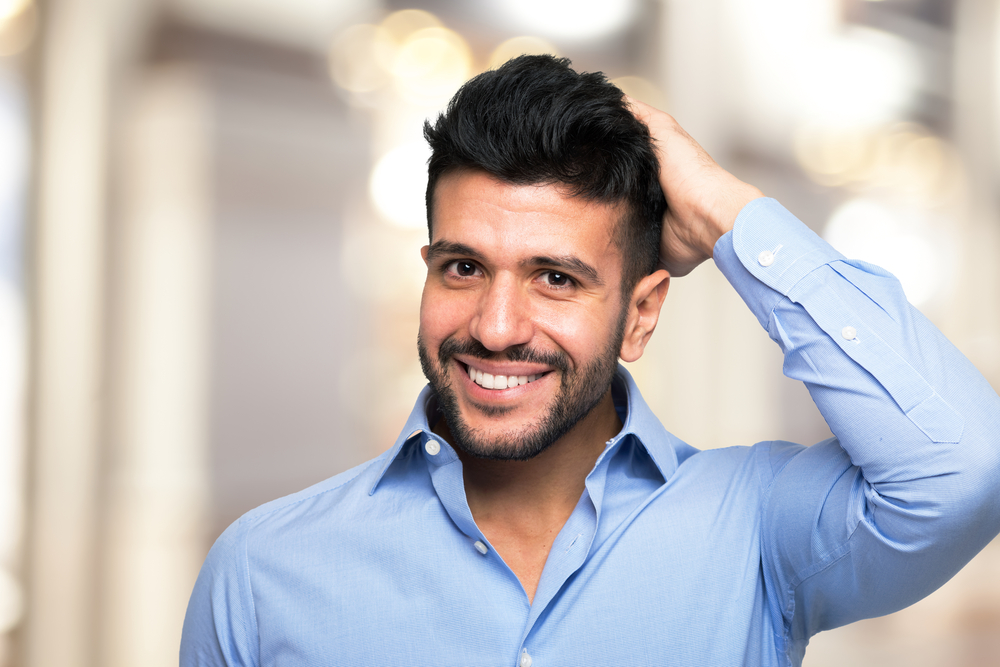
What exactly is a hair restoration program?
A hair restoration program is obviously going to focus on increasing the number of hairs on your head. There are various methods of doing this including the use of special vitamins and supplements containing ingredients that may help strengthen the hair, as well as other products that may stimulate hair growth itself. Specialized shampoos are also available that may promote growth and vitality of the scalp. This implies that taking care of the scalp is predominately an ongoing daily therapy for you, the client, to do at home. Other useful procedures include the use of low-level laser lights that are known to stimulate hair growth also. At the time of your appointment, the various options can be discussed further.
-
Who is a candidate for hair transplant (NeoGraft)?
Assuming that you have used various vitamins, laser lights and topicals that can be used to stimulate hair growth directly in the scalp, it may be necessary to do a hair transplantation to fill in the gaps that were not filled in by these products. Thus, hair transplantation becomes an option at this point in time. Generally, anybody with healthy skin and good health in general is a candidate for this type of procedure, which is regarded as a low-risk minimally invasive procedure. Chronic health problems such as diabetes, hepatitis, and significant cardiac disease may create some problems in doing this type of procedure without complications.
-
How is the procedure done, and where does the hair come from?
The hair that we use in the office is all your own hair harvested usually from the back of the scalp area. A Band-Aid shaped area is defined on the back of the scalp and then local anesthetic is injected. The hair is shaved down to a very short level and approximately one of every six hair follicles is removed using a special device manufactured by the NeoGraft Company. Typically one commits an entire day to this type of procedure. Standard preoperative expectations include eating a light breakfast on the day of procedure and stopping all blood thinners if in use at the time.
Once the area of hair donation is defined, local anesthetic is given like what you might expect to receive at a dental office. The hair extraction then continues. Most clients with significant hair loss to the point where more skin is visible than hair may require anywhere from 1500-2500 hair follicles to have a completely filled in look. Since the head has a million or more hairs on it, clearly this is a very doable type of procedure. It is a time consuming procedure that involves four to five hours minimum , perhaps more depending on the job.
Once the hair is harvested and counted, it is then re-implanted in the scalp, usually in the front of the top of the head. The skin would likewise be prepared in this area by cleansing the skin and administering local anesthesia. Small guide punctures are made with surgical needle to allow the graft to be implanted in the desired pattern of the client.
-
What happens after the hair transplant is done?
The procedure usually takes anywhere from four to eight hours depending on the amount of hair being transplanted. Afterwards, it is possible to return to daily activities within 24 hours or less. Routine common sense precautions are taken not to dislodge the hair grafts during the first one to two days post procedure. After the immediate postoperative period is finished, you can resume wearing hats and exercising as before. Results can take anywhere from one to six months, even longer to see. It is important to continue the use of the same vitamin or supplement routine that you have been using before the transplant was done.
-
Is Platelet Rich Plasma used?
Platelet Rich Plasma is an interesting product derived from your own blood. Essentially the platelets, the tiny cells that are responsible for coagulating the blood and stimulating wound healing , are harvested from a sample of your blood drawn here at our office. The blood is centrifuged, and the platelets are isolated and then removed from the test tube. They are then injected underneath the scalp to promote healing and stimulate growth of new hair. This is another procedure that could be started before the actual transplant and can go on indefinitely afterwards to maintain the quality of hair and the number of hairs that you now have.
-
What is the long-term postoperative care?
Like any medical procedure, close follow up at intervals of every few months is important to maintain optimal growth and health of the scalp and hair transplants, as well as to provide ongoing medical supplement use as needed.
You have talked a lot about scalp restoration. Are there any other areas on the body that can be worked on the same way?
A patchy beard or mustache can be repaired with hair transplantation as well as eyebrows as well. We can help you restore over-plucking, waxing or just correcting an issue you have always struggled with.
Discounted Stay at Hyatt Place Chicago
This booking link will entitle ENFUSE Medical Spa clients to a 20% discount off of their stay at the Hyatt Place Chicago!

